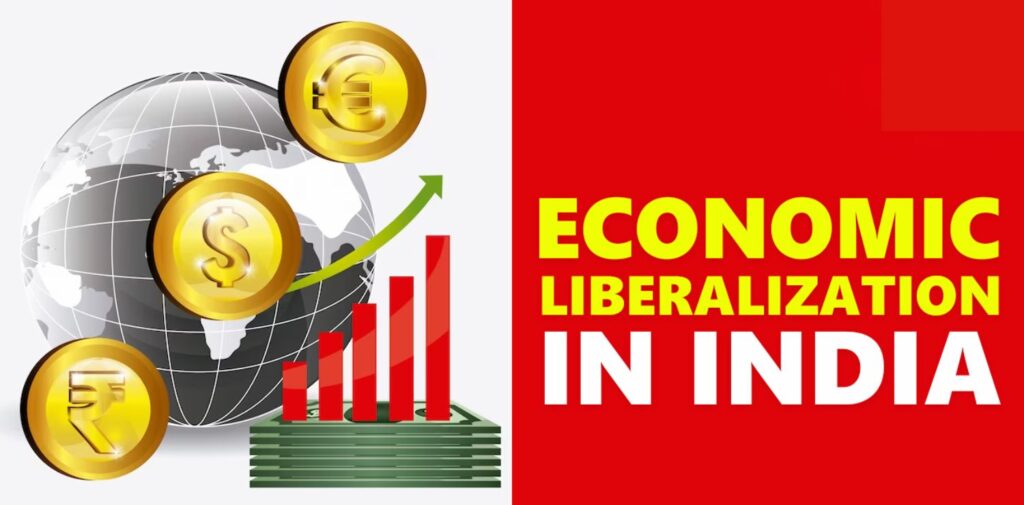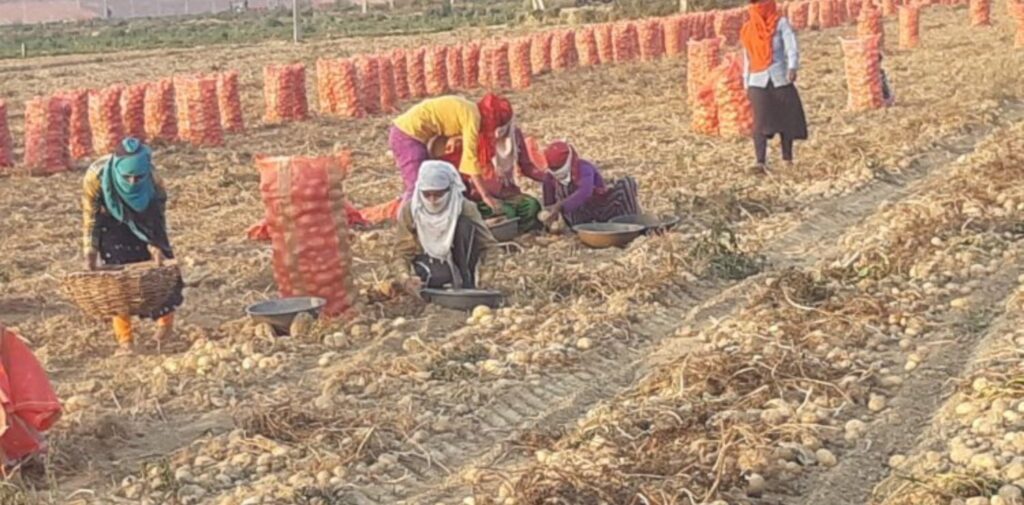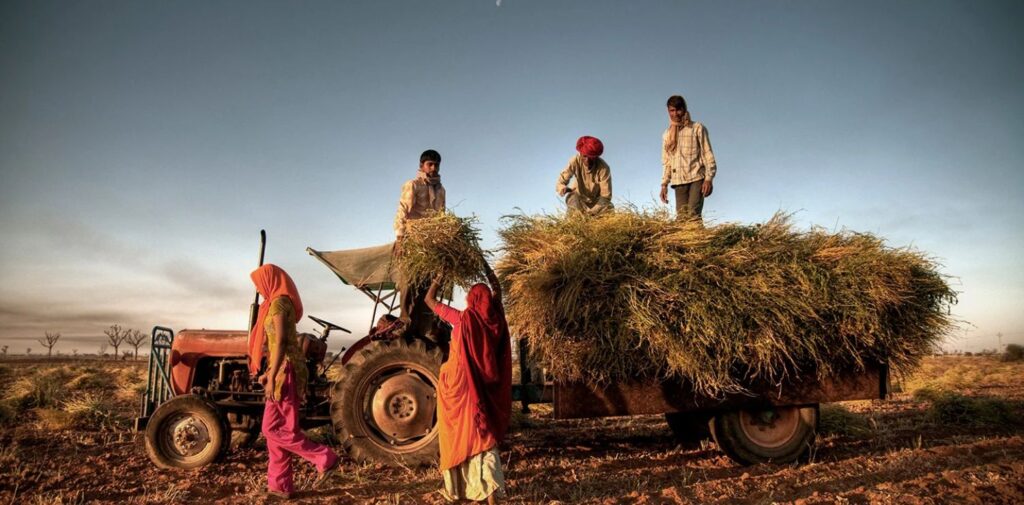India is a country with a large rural population. Most of the people live in villages and depend on farming and agriculture for their livelihood. The rural economy of India has always been an important part of the country’s overall economic growth. However, the economic liberalization of India in 1991 brought big changes to the way the country’s economy worked. These changes had a major impact on both the cities and the villages. In this article, we will explore what economic liberalization is, how it affected India’s rural economy, and how it has helped or hurt farmers and rural areas.
What is Economic Liberalization?
Before 1991, India had a more controlled economy. This means that the government played a large role in deciding how businesses should operate, what goods should be produced, and how much they should cost. The government also controlled trade with other countries. This system is known as a socialist economy or closed economy.
In 1991, India faced a financial crisis. The country did not have enough money to pay its debts, and the economy was struggling. To solve this problem, the government decided to open up the economy by reducing controls and allowing more private companies and foreign businesses to operate in India. This process is called economic liberalization. The main changes included:
- Reduction of trade barriers: The government allowed more goods to be imported and exported.
- Privatization: Government-owned companies were sold to private companies.
- Deregulation: Many rules and regulations were removed to make it easier for businesses to operate.
- Opening to foreign investment: India invited foreign companies to invest in the country and set up businesses.
While these changes helped cities grow faster, the effects on rural areas were mixed. Let’s now look at how liberalization affected India’s rural economy.

Positive Impact on Rural Economy
- Better Access to Technology: One of the good effects of economic liberalization on the rural economy was that new technologies started to reach villages. Before 1991, farmers had limited access to modern farming tools and techniques. After liberalization, there was more focus on improving agricultural technology, and rural areas began to get better equipment, better seeds, and better ways of farming. For example, the Green Revolution in India had already introduced high-yielding varieties of crops in the 1960s and 1970s, but after liberalization, there were more innovations, such as better irrigation systems, chemical fertilizers, and improved machinery. These technologies helped farmers increase their production and earn more money.
- Better Connectivity: Economic liberalization also meant that infrastructure, like roads, telecommunication, and electricity, improved in many rural areas. New roads were built, making it easier for farmers to transport their goods to the market. Mobile phones and the internet became more accessible, helping farmers get better information about prices, weather conditions, and new farming techniques. This made rural areas more connected to the larger economy and improved farmers’ ability to make informed decisions.
- Growth of Rural Industries: Liberalization brought about the rise of small businesses and industries in rural areas. With fewer regulations and more private investment, many new businesses began to operate in villages. This gave people new job opportunities and helped diversify the rural economy, which had mostly been dependent on agriculture. Small-scale industries, like food processing, textiles, and handicrafts, grew in many rural areas. This led to an increase in income for many rural families who found employment in these new industries.
- Increased Export Opportunities: As India became more open to the global market, rural products like spices, fruits, vegetables, and textiles found new buyers in international markets. This helped farmers and rural businesses earn better prices for their products. For example, Indian farmers began exporting mangoes, basmati rice, and tea to countries around the world. This also encouraged better quality production, as farmers had to meet international standards.

Negative Impact on Rural Economy
- Increased Inequality: While some rural areas benefited from economic liberalization, not all villages saw the same level of progress. The wealthier farmers who had better access to technology, credit, and markets were able to take advantage of the changes. However, many poor farmers continued to struggle. Those without land, money, or access to modern tools were left behind. The gap between rich and poor farmers grew, and some parts of rural India continued to suffer from poverty.
- Falling Agricultural Prices: Liberalization opened the market to foreign goods, which often led to competition for Indian products. Many farmers found that the prices for their crops fell, especially for products that were also being imported from other countries. For example, the price of pulses, wheat, and cotton fluctuated as foreign crops entered the Indian market. This made it harder for farmers to earn a stable income, especially if they were dependent on just one or two crops.
- Problems for Small Farmers: The liberalization policies also led to a focus on big agribusinesses and corporate farming. Large companies with more resources were able to take over large pieces of land and create highly efficient farms. Smaller farmers, however, struggled to compete with these big companies. This was especially difficult for farmers who could not access bank loans or who did not have enough money to buy high-tech equipment or fertilizers.
- Environmental Concerns: While liberalization brought new technology to farming, it also led to an increase in the use of chemical fertilizers, pesticides, and other harmful practices. These chemicals, while boosting crop yields in the short term, have harmed the environment and reduced soil fertility. In many parts of India, groundwater levels have dropped because of overuse of water for irrigation. This has led to water scarcity in several rural areas. The long-term environmental impact has been a big challenge for rural India.
How Liberalization Affected Rural Employment
Before liberalization, agriculture was the main source of employment in rural India. However, after 1991, there was a shift in the types of jobs available. Many farmers, especially small farmers, began leaving agriculture and moving to cities in search of better job opportunities. While this led to urban migration, it also caused a loss of jobs in rural areas.
On the other hand, the development of new industries and the growth of rural businesses provided some rural workers with new employment opportunities. These industries, however, required new skills and education, which many rural people lacked. As a result, rural unemployment remained a challenge for many years after liberalization.

What Can Be Done for Rural India?
While economic liberalization has had both positive and negative effects on the rural economy, there are ways to ensure that rural areas benefit more from future economic changes:
- Improved Support for Small Farmers: The government can focus on helping small farmers by providing access to better farming technology, affordable loans, and insurance to protect them against crop failures. Farmers should also be given fair prices for their produce, and there should be more market access to sell their products.
- Focus on Rural Education and Skills Development: Education and skill development programs should be introduced in rural areas to help people learn new skills and move into non-agricultural jobs. This can help reduce poverty and unemployment in rural areas.
- Sustainable Agricultural Practices: To protect the environment, it is important for farmers to shift to more sustainable farming practices. This includes using less harmful chemicals, saving water, and focusing on organic farming. The government can play a role by promoting these practices and offering incentives for farmers who adopt them.
- Better Infrastructure: Improved roads, electricity, and access to the internet are necessary for rural development. Better infrastructure will help farmers get their products to markets and make rural areas more attractive for businesses to invest in.
Conclusion
Economic liberalization has had a significant impact on India’s rural economy. While it has brought some positive changes, such as better technology, new job opportunities, and access to global markets, it has also created challenges like increased inequality, falling agricultural prices, and environmental issues. To ensure that rural areas continue to grow and prosper, it is important to provide support to small farmers, improve education and skills, and promote sustainable farming practices. With the right policies, India’s rural economy can benefit from liberalization and become a strong and thriving part of the country’s future.




